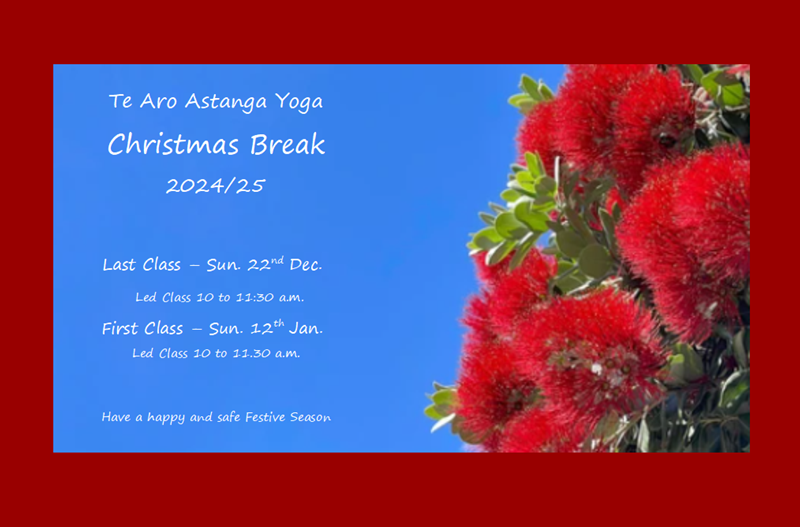The 18th and 19th of May are now always a bit of an emotional time for me. The 18th is the anniverary of Guruji passing and the 19th is my birthday (I completed 55 years this time) and the two things have become, somehow linked for me.
This year it got me to thinking about my first trip to Mysore in 1994. Sheeesh, I just realised that is almost 20 years ago. Anyway, at that time Guruji was full of energy. He was a lion and I remember how he quickly identified the weakest aspects of my practice and was on me in those asana, every day. He would hold me there with strength and compassion and laughter and I had the overwhelming feeling of having to face my deepest fears. Every day, without fail he would be there and eventually tears just flowed from me. And he was still there, still on me and still making me face my fear and being the slow learner I am, it wasn’t until I was back at home and practicing and reflecting on what had happened that I learnt that what he wanted from me was to Breathe and to let go and to see that there is a place on the other side of that fear. That first trip to Mysore sealed in me my love and trust of Guruji and my passion for this practice and the lessons it teaches.
Since then I have come to understand the important place that fear plays in the Ashtanga method. It starts from day one for many people, especially when they are new to the traditional “Mysore Style” of teaching. From the beginning you are challenged to take responsibility for your practice and for your own body in your practice. You will be shown a Suryanamaskara and then asked to repeat it until you can show that you have remembered it and in the meantime, all around you may be people doing things that just look impossible to you and there will be this audible breath, like the room itself is breathing. Scary stuff!!
If you persist, if you rise to the challenge you will start to realise that you are being given the freedom to grow a practice in your own time within the boundaries of the Ashtanga method and of the capability of your own body. You will not be asked to switch your mind off and just follow blindly the instructions of a teacher. Instead you will be expected to stay engaged in your body and in your practice. You will be expected to move and to listen to your body to discover where the stability and the space is in each asana, for your body, not for the sometimes extremely different body of the teacher.
This is often where fear and one of its precursors, pain have a big part to play. We all tend to have a negative view of pain which made it incongruous when Guruji would behave with delight when we complained to him about it. Here is a great little video of David Garrigues explaining Guruji’s attitude much better than I can. http://www.youtube.com/watch?v=R6xhxmj7yYY Take the time to watch it.
The body generates pain for a reason, but that reason need not be that we are doing something wrong. Instead the pain is saying to us “pay attention here. What you are doing is putting stress on me and you need to do something about that”. The challenge is to find out what to do, to find out what works for you and for your body. Always start with the breath. When you experience pain, stop pushing, relax a little and make sure that you are breathing evenly and calmly. Often I have found that this is enough and the pain and the fear that may have generated it subsides. If that is not enough then ensure you are holding Mula Bandha. Again, in my experience, this is often enough. If the pain is still there then you need to move your body to find a place in the Asana that your body can be with stability and comfort. This needs to be done with compassion and with careful attention. Stay focused. The worst thing you can do is to ignore the flag your body is putting up or to be inattnetive. Do not make the mistake I made in the early years of my practice and try to bully your body into submission by barging through the pain. Practice patience and compassion.
The Ashtanga Yoga Practice is a challenging one on all sorts of levels. There is no place to hide. You have to face those asana that you are least capable of. Inevitably there will be pain and there may be injuries. Learn the lessons that these show you. Every day, every practice, be attentive, listen to your body, and approach every asana as if you are doing it for the first time. Self adjust. See what works for you. Ask your teacher for advice but accept that you need to find what works for you. Remember that breaking down the ego may start in breaking down and rebuilding the body so that you can feel the energy flowing freely through every part, every cell in you. And of course, be gently persistant. Practice, practice, practice…….

I like that…”pay attention here… breathe evenly…with patience and compassion”, somehow it all helps to even things out and make for a fluid practice, thanks for the great blog, Mike
This is right on the money for me at the moment- reading it helps me expand my perception and experience a bit…good in developing trust 🙂 Thanks Mike